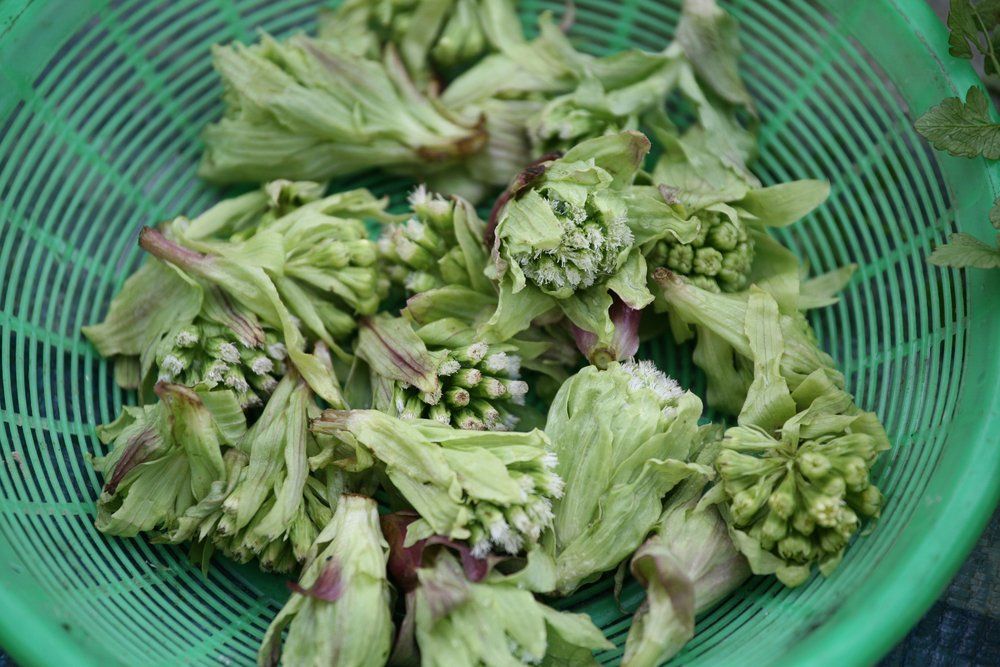Article
Migraine Preventative Butterbur Has Safety Concerns
Author(s):
Despite butterbur’s potential efficacy, doubts are increasing about its long-term safety given of the risk of liver damage and the lack of an actively regulated preparation.
Safety concerns about migraine preventative butterbur are growing. ©KPG_Payless/Shutterstock

Butterbur, a popular over-the-counter nutraceutical used for the prevention of migraine, has recently been associated with serious safety concerns. Common butterbur (Petasites hybridus) is a perennial plant that contains chemotypes, termed “petasins,” that are thought to be positively pharmacologically active and may have an anti-inflammatory effect. Butterbur has long been used in herbal medicine for the treatment of many conditions, including allergic rhinitis; as an antispasmodic; and in the prevention of migraine.1
A specific proprietary butterbur extract, Petadolex (produced by Germany-based Weber & Weber), has been studied as a migraine preventative in several randomized clinical trials. The first placebo-controlled, randomized clinical trial with this extract was conducted in 2001. A group of 33 adult subjects given a dose of 50 mg BID demonstrated a decrease in migraine frequency from a baseline of 3.4 per month to 1.8 per month after 12 weeks of treatment (p=0.0024). No significant adverse effects, including elevation of liver function tests, were reported during the treatment period.2,3
This was followed by a larger placebo-controlled RCT in 2004 in which 233 adult subjects with episodic migraine were randomized to doses of 50 mg BID or 75 mg BID of Petadolex versus placebo over a 16-week treatment period. The 75 mg BID group saw a reduction of migraine frequency of 45% (p=0.04). The 50 mg BID group had a reduction of 32% and the placebo group 28%, both of which were not statistically significant (p=0.43). No significant adverse effects, including elevation of liver function tests, were reported during the treatment period, and the authors noted burping as the only unique adverse effect. They concluded that Petadolex at 75 mg BID was more effective than placebo in migraine prevention.4
These two studies were together evaluated as part of the American Academy of Neurology evidence-based guideline update for NSAIDs and other complementary treatments for episodic migraine prevention in adults in 2012. The review categorized the studies as class 1 trials, and Petasites received Level A classification, establishing it as effective for migraine prevention. Despite this recommendation, the guideline does note that the safety of prolonged use of Petasites was not established in the review.5
Unfortunately, butterbur extract has been shown to contain pyrrolizidine alkaloids (PAs), a toxic substance that causes hepatoxicity in humans and has been shown to be mutagenic and carcinogenic in animal studies. The extract must be manufactured carefully and consistently to remove PAs.1
In a recent review of 21 commercial butterbur products, 7 of the 21 products (33%) contained PAs. In addition, only 7 (33%) showed an amount of petasins consistent with each product’s labeling. Of note in this study, Petadolex contained petasins in the amount disclosed on the product labeling with no detectable PAs in the sample provided.6
Petadolex was previously registered by the German health authority BfArM, which regulates drugs, medical devices, and herbal supplements in Germany, and was the only butterbur compound to be approved by a governmental regulatory body. Although Petadolex is still commercially available, it has since lost this approval in 2009 and is now unavailable in Germany. Reportedly this was due to a change in the manufacturing process, occurring prior to the above studies, for which BfArm required reregistration as a new drug and which the company has not completed.7,8 In addition, due to reports of human hepatoxicity associated with the use of butterbur-containing compounds, all butterbur supplements have since been banned in Switzerland.
Despite butterbur’s potential efficacy, doubts are increasing about the long-term safety of this supplement given of the risk of liver damage and the lack of an actively regulated preparation. Due to the mounting concerns, the American Headache Society is currently evaluating a position statement cautioning against its use.
References:
1. Aydin AA, Zerbes, V, Parlar H, et al. The medical plant butterbur (Petasites): analytical and physiological (re)view. J Pharm and Biomed Anal. 2013;75:220-229.
2. Grossman W, Schmidramsl H. An extract of Petasites hybridus is effective in the prophylaxis of migraine. Altern Med Rev. 2001;6:303-310.
3. Diener HC, Rahlfs VW, Danesch U. The first placebo-controlled trial of a special butterbur root extract for the prevention of migraine: reanalysis of efficacy criteria. Eur Neurol. 2004;51:89-97.
4. Lipton RB, Göbel H, Einhäupl KM, et al. Petasites hybridus root (butterbur) is an effective preventive treatment for migraine. Neurology. 2004;63:2240-2244.
5. Holland S, Silberstein SD, Freitag F, et al. Evidence-based guideline update: NSAIDs and other complementary treatments for episodic migraine prevention in adults: report of the Quality Standards Subcommittee of the American Academy of Neurology and the American Headache Society. Neurology. 2012;78:1346-1353.
6. Avula B, Wang Y, Wang M, et al. Simultaneous determination of sesquiterpenes and pyrrolizidine alkaloids from the rhizomes of Petasites hybridus (L.) G.M. et Sch. and dietary supplements using UPLC-UV and HPLC-TOF-MS methods. J Pharm Biomed Anal.2012;70:53-63.
8. Petadolex capsules formal registration expires. Weber and Weber company website. Accessed January 27, 2015.




